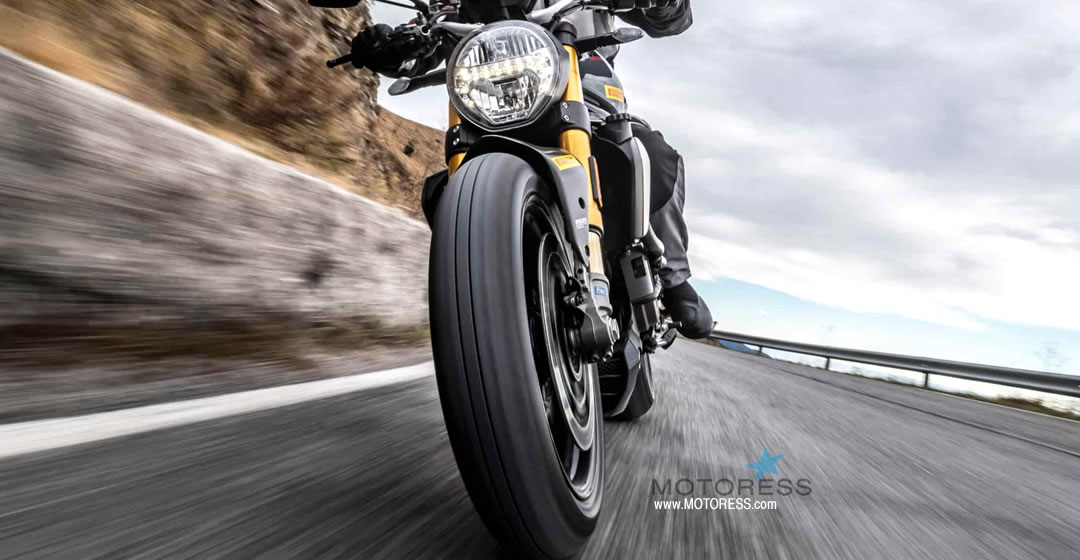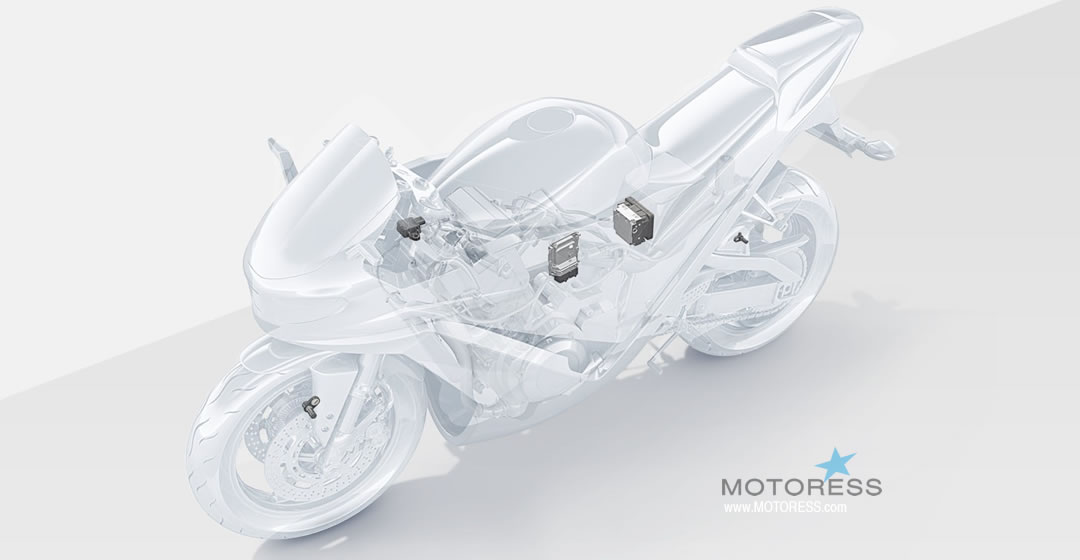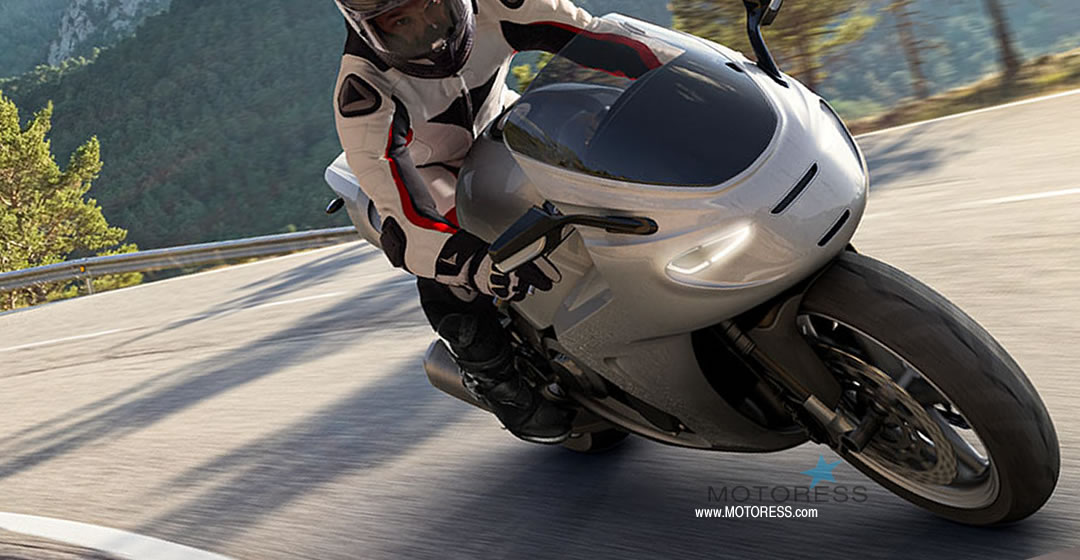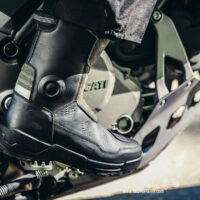Last Update: 10 December 2022
Latest Update: 8 December 2022

Traction control science continues to make its way onto motorcycles. Motorcycle Traction Control Systems help you to accelerate, brake, and steer efficiently. This results in enhancing your riding – making it safer, easier and with greater “peace of mind”. Traction control is particularly useful when riding over slippery surfaces (wet lane markings, gravel, streetcar tracks) it can not only interject assistance helping you maintain grip but it so instinctive it will respond to situations you overlooked! As the skills required to manage loss of grip, well, most riders haven’t developed these skills [yet] required to manage these circumstances — and just maybe, going forward – there will be less of a need to!
MOTORCYCLE TRACTION CONTROL SYSTEMS = Electronic Stability Control
More commonly referred to as “Electronic Stability Control” (ESC), it’s a computerised technology introduced around 1995 for improving the safety of a vehicle’s stability. It works by detecting and minimising skids or loss of grip. When ESC detects loss of steering control, ESC automatically applies the brakes to help “steer” the vehicle where the driver intends to go. Some ESC systems also reduce engine power until control is regained. ESC does not improve your motorcycle’s cornering performance, rather it helps to minimise loss of control. When comparing results in automobile accidents, the American Insurance Institute for Highway Safety (IIHS) found that one third of fatal accidents could be prevented by this technology. And that’s great news!
TRACTION CONTROL SYSTEMS HISTORY
Incredibly these systems were first introduced in automobiles from what can be shown, initially in 1932. Ferdinand Porsche designed a Grand Prix racing car where the high power output of his design caused one of the rear wheels to experience excessive wheel spin. This occurred at any speed and up to 100 miles per hour. Then in 1935, Porsche commissioned the German engineering firm ZF Friedrichshafen AG to design a limited slip differential that would perform better.
Traction refers to your tire’s grip on the road – the more traction you have, the more grip you have.
In 1987 the earliest innovators for ESC, Mercedes-Benz, BMW and Toyota introduced their first traction control systems. Traction control works by applying individual wheel braking and throttle to keep traction while accelerating but unlike ESC it is not designed to aid in steering.

WHAT IS TRACTION CONTROL?
Traction refers to your tire’s grip on the road and its stability. The more traction you have, the more grip you have. You need to have traction to accelerate, brake and steer effectively. If your motorcycle does not have enough traction, it will be harder for you to do these things proficiently, even with the right skills.
HOW DOES MOTORCYCLE TRACTION CONTROL WORK?
Motorcycle stability control systems are phenomenal. In general application, motorcycle traction control systems (TSC) and MSC “motorcycle stability controls” use an array of wheel-speed sensors to register the riding dynamics of your two-wheeler. Wheel-speed sensors measure the rotational speed of the front and rear wheels, and the inertial measurement unit measures the vehicle’s acceleration and angular rate 100 times per second.
MOTORCYCLE STABILITY CONTROL
If one wheel is spinning more quickly than the other, it would be easy for you to lose control. As soon as the sensors pick up a difference in speed, the traction control system encourages the brake to lessen the speed of that specific wheel so that it slows down in line with the speed of the other wheel. This limits the chances of skidding or sliding off the road.
Relying on technology is not a reason to forfeit mastering and possessing proper riding skills and techniques required to handle various road conditions. These skills will always be needed. ~ Vicki Gray
The MSC systems also offer brake control even in curves, which depends on the vehicle’s lean and pitch angles. The brake control improves stability and braking effectiveness even in dynamic situations. By analysing the sensor data, the difference in speed between front and rear wheels, as well as the current dynamic state of the vehicle, MSC brings even better safety and stability in various riding situations.

VALUE-ADDED FUNCTIONS
The value-added functions for stability systems in general are so advanced now they offer a series of riding support functions with sophisticated brake and powertrain control technologies. This all thanks to expanding function portfolios from the manufacturers, the integration with multiple components (e.g., radar sensors) enables next-level safety and comfort technology! And this just adds to incredible great pluses for riders.
| Rear-wheel lift-up control: | Keeps the rear wheel on the ground and significantly reduces the risk of a rollover |
| Traction control: | Controls engine torque and ensures the optimal driving force on the road. |
| Wheelie control: | Prevents uncontrollable lift-up and ensures maximum possible acceleration. |
| Hill hold control: | Makes starting the two-wheeler on a slope easier. |
| Off-road control: | Keeps the fun of riding – even off the beaten path. |
| Adaptive cruise control (ACC): | Intelligent cruise control system for comfortable and relaxed highway riding. |
| Vehicle hold control: | Makes handling large and heavy two-wheelers easier – not only when starting on a slope. |
| Slope-dependent control: | Optimised brake performance according to road slope situation. |
| Cornering electronic combined braking system: | Optimised brake force distribution through electronic combined brake system for further riding safety. |
| Rear-wheel slide control: | Allows and controls a certain rear-wheel slide during hard braking in racetrack situations. |
| Launch control: | Supports a fast launch, which increases the fun of riding on the racetrack. |
| Cornering drag torque control: | Counteracts critical situations that arise when drive torque suddenly increases or drops. |
BAD WEATHER AND TRACTION
Although Motorcycle Traction Control does help your motorcycle to grip the road better in bad weather conditions, a TCS does not increase the amount of grip your tires have. It simply prevents them losing the grip they already have. This is done by inputting throttle controls (power to the back wheel) etc.
DO ALL MOTORCYCLES HAVE TRACTION CONTROL SYSTEMS?
No not all motorcycles are equipped with traction control systems unless specified. and on some models these can be optional features. However, most modern motorcycles have on board computers and these offer different ride modes, meaning yes – traction control. Anti-lock Braking System (ABS) which is one of the most common forms of motorcycle traction control can be found on an increasing number (all BMW‘s) of motorbikes. If you have to brake hard, this system stops your wheels from locking and going beyond your maximum braking threshold—which without ABS and good braking skills often results in a skid or total loss of control.
TRACTION CONTROL ALSO CALLED:
- ESP: Electronic Stability Program
- DTS: Dynamic Traction System
- DSC: Dynamic Stability Control
- AHS: Active Handling System
- PCS: Precision Control System
- DSM: Dynamic Stability Control
- DTSC: Dynamic Stability Traction Control
- MSC: Motorcycle Stability Control
Each manufacturer, just as they do throughout their brands aim to personalise their own stability control systems may name them differently yet all in all, the systems function the same.

BENEFITS FOR RIDERS
- High-level safety technology for better safety and stability even in a dynamic situation, thanks to lean and pitch angle-dependent braking control.
- Sophisticated brake control capability based on feedback from sensors.
- Detection and calculation of changing vehicle conditions by inertial measurement unit and other sensors.
- Enables a wide range of additional value-added functions for increased safety, comfort, and performance.
Are traction control systems worth it? I say yes. Naturally, I emphasize the fact that having the base of skills and techniques which when all else fails can get you through these circumstances – i.e. masterful high speed braking techniques, etc. remain key. And when you include an added back up of a stability control system, a system which will kick in and help you out – results in the best all around combo of tools to manage seen and unseen risky road conditions.




